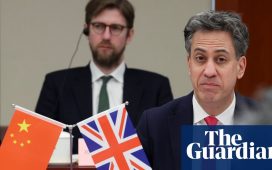Stay informed with free updates
Simply sign up to the UK energy myFT Digest — delivered directly to your inbox.
In the dark days of 2022, it became clear that despite the growth of cheap, clean, renewable power generation, the UK electricity system was still, ultimately, controlled by gas.
The wholesale price of electricity is set by the most expensive generating asset. As gas prices soared after Russia’s invasion of Ukraine, average household energy bills more than quadrupled to more than £4,000 and the government stepped in with billions to cap those bills, the peculiarities of the market structure were clear.
This is most obviously the case for wind and solar power supplied under old-style renewables obligations contracts, which cost the equivalent of sky-high gas prices for electricity with much lower production costs. More recent contracts for difference offer a fixed price for renewable generation instead.
One result was that the government decided to impose a revenue cap on low carbon generation, an odd move given the urgent need to attract vast investment in order to decarbonise the UK grid.
Another was what the government called “the biggest electricity market reform in a generation”, the snappily named review of electricity market arrangements or Rema. This explicitly set out to try to decouple different parts of the market, stopping volatile fossil fuels setting prices for renewable production.
Don’t bet on it happening, though. An interim report, scheduled for this autumn, is expected to rule out or delay this type of decoupling, after officials concluded it would be too challenging. Gas could hold sway in the UK power market for years or decades to come.
This sounds perverse. But there is a case to be made that splitting the market into gas-generated versus renewable power, a fiendishly difficult task, doesn’t bring sufficient benefits to be worthwhile, except when there is an international gas shortage and prices are soaring. It would be a solution, one without international precedent, to 2022’s specific problem.
The realities of having two separate markets, which would need to interact in real time to balance supply and demand and bring on capacity when required, are fraught. One proposal, from UCL’s Michael Grubb, proposed the government in effect act as a single buyer for all green power, creating a “green power pool”.
When the report is published, expect some fudge, though, given that the idea of freeing consumers from the effects of volatile gas prices was central to reform efforts. The government could dust off last year’s failed attempts to negotiate with generators on renewable obligations contracts to switch to CFDs, uncoupling another chunk of generation from fossil fuel prices.
Another option would be to play up the virtues of what is going to happen anyway: the gradual dilution of the influence of gas in the system as more and more renewables come online. Those renewables, especially if they are located in places that can generate electricity at varying times, combined with more storage in the form of batteries should start to reduce the role of gas in setting the market price.
To achieve decoupling over time, the government must avoid the mistakes of its annual renewables auctions in September, which failed to attract any interest from offshore wind developers because the price for electricity generation was set too low.
Another reason not to bog the entire process down in a formal market split, is the need for other crucial reforms under consideration as part of Rema.
Renewable obligation contracts start to wind down from 2027 and those assets could be modernised under new fixed-price contracts. New types of fixed-price contracts are needed to incentivise renewables to be built in different places. Enabling low carbon generation to help balance the grid requires reform of the capacity market — the mechanism for ensuring there is always enough power available. Meanwhile, there is a furious debate going on within the sector about whether contracts should be priced according to location, to incentivise the investment needed to reach net zero.
The awkward truth is that these changes would still leave gas with a central role in a decarbonising power system. Even by 2050, argues Dan Monzani at Aurora, gas production offset using carbon capture could be fulfilling just a tenth of UK power needs but setting the price more than half the time throughout the year. In this vision of the market, even with vastly more renewables, the wholesale electricity price could routinely swing from near zero to the gas price.
All very well, until the next gas crisis.











